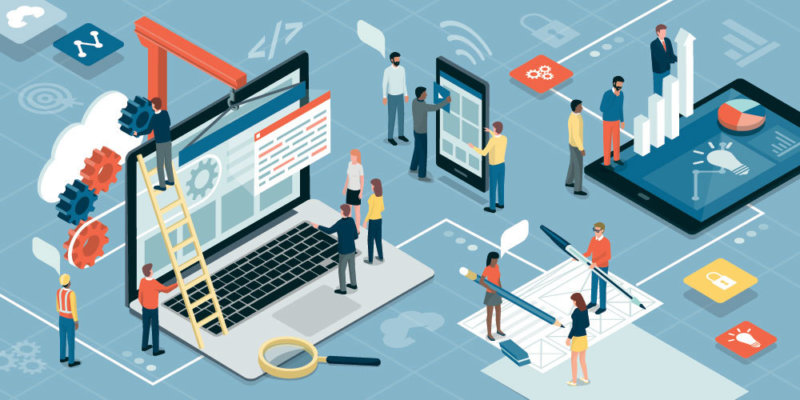
Growing up Vietnamese-American, I was taught to honor and respect people, never to waste anything and to always think beyond myself. I was also taught to hide conflict and to ignore problems, especially if had to do with someone senior to me.
I learned quickly that honor and respect cannot last without surfacing conflict and proactively resolving issues. At Planview AgilePlace, our culture starts with people. The diverse, quirky personalities in our company are allowed to shine through — they make us who we are.
But our traditions go deeper than bacon, Doctor Who, and Nerf guns. They’re rooted in an intrinsic hunger and drive to work together to improve the way the world works. We know that respect for people is one of the most effective Lean improvement methods, which enables us to maintain our agility, and adapt to change quickly and sustainably.
All this is not without conflict. We have a diverse team with diverse skills and personalities, which makes conflict (defined as a difference in opinion or approach) inevitable. We know that when diversity is not treated with respect, this healthy, natural conflict can escalate to become unhealthy, and turn into distrust, frustration, or resentment.
How Lean Improvement Methods Enable Respect
Our core values (respect for people, continuous improvement and a relentless focus on delivering customer value) have helped us seed a culture of understanding and accountability that spans backgrounds, personalities, workflows and belief systems.
These values are strengthened through Lean principles, which are applied across the organization, from the way we hire to the way we interact with each other on a daily basis. I’ll explain each of those Lean improvement methods and principles, as well as give practical tips for how to incorporate them into your organization to create a rich, diverse, respectful Lean culture.
Optimize the Whole
Culture is our heartbeat here at Planview AgilePlace. Everyone who joins Planview AgilePlace goes through our Lean Bootcamp: an intensive training dedicated to learning Lean principles, practice activities that demonstrate Lean tools and product training.
Our learning does not stop there. We continue to train and have refreshers as we join our teams. We have Lunch and Learns, covering everything from blogging to public speaking, so we can empower every Planview AgilePlaceter to use their diverse knowledge and expertise to benefit others. We empower everyone to have an equal voice and a channel to celebrate their diversity.
We are all Lean practitioners and teachers, working to practice Lean improvement methods in every activity we do. We are constantly exercising and strengthening our Lean muscles, not only to punch bears, but to face our fears and overcome it to all follow a common purpose.
Walk the Gemba Walk
Gemba means to “go and see.” Walking the gemba is never more critical than when we face incidents or outages with our software. Our cross-departmental incident response team works together to make sure customers, employees and other stakeholders are all up-to-date and informed.
Our CEO, CIO, CTO are in the trenches with the product development, marketing and sales teams, sometimes burning midnight oil. As we improve the incident response process, we document it in a place everyone can access. We hold regular trainings to keep all teams informed of proper protocol. We do the gemba walk to physically go to the heart of the problem, make it transparent and fix it together.
The same goes for people. When conflict arises out of our diversity, we come together to listen and support. When we have team issues, we all get together in a room and whiteboard our concerns and action items to resolve them.
Walking the gemba is to walk in someone’s shoes. We do this through being in the same place, face to face. How do we do this when we have employees all over the world? We have virtual conferences, we fly people in for our planning meetings. Twice a year, we get everyone together for an entire week of planning, bonding, and learning. We work hard to provide an environment where everyone can participate, no matter the distance.
Kaizen
Our culture of Kaizen (continuous improvement) allows us to fail fast, so we can learn faster. Planview AgilePlace has an environment where we can reflect on our mistakes and work on mistake proofing our process. We invest heavily in training to teach the skills and knowledge teams need to succeed.
Kaizen is everyone’s responsibility. Team leads often identify their own learning gaps, and develop team training for our bi-weekly team training sessions. I work with team leads and subject matter experts to cross-train teams in technologies like Rabbit MQ and Docker. We have an open library and subscriptions to training sites for self-learning. We have an all hands (whole) company training on a regular cadence, so we can constantly reflect, learn, and get better.
We have to have slack time to practice Kaizen, which is why slack time is an integral part of our workflow. Slack gives us time to reflect, practice, and improve our work. It’s everyone’s responsibility to create an environment where slack time is encouraged and respected.
We also must take advantage of slack time ourselves, so that we can learn, grow, and become increasingly valuable to our teams. A healthy organization invests time for everyone to learn.
Kanban
We fear what we don’t see, and we make assumptions about things we don’t know. Kanban is the tool we use to visualize our work, and it can also help visualize defects and misunderstandings. By using process policies, everyone can decide on guidelines and boundaries together.
Planview AgilePlace (the software) allows you to make those policies transparent to everyone, so there are no misunderstandings — and if the policies aren’t clear enough, they can be edited. The more we see, the more we understand and the better we can work together.
Our teams have Lean walkabouts and Lean coffees, which encourage open conversations and allow everyone to have a voice. Usually, we draw a basic “To Do, Doing, Done” Kanban board on a whiteboard, where everyone submits sticky notes with ideas for improvement. Once everyone has submitted their ideas, participants vote on which topics to discuss. This allows everyone to have an equal voice and be heard. Open forum conversations like this allow people from different backgrounds to share their expertise, perspective, and concerns. Simply talking, without judgment, is one of the most effective Lean improvement methods available to us, and anyone — even someone with little Lean experience — can participate.
Stronger Together
My parents always told me that anyone can break one chopstick, but if I had a bundle of chopsticks, it would almost be impossible to bend. An organization is only as successful as its people, united under one purpose. Here at Planview AgilePlace, we all have the same purpose: to make work better for everyone in this world. Try incorporating some of these Lean improvement methods into the culture of your team or organization, and watch as collaboration, quality, and communication improve.




